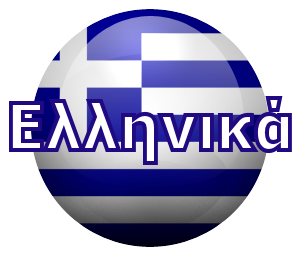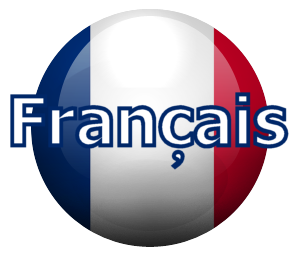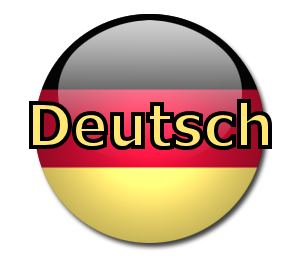Midwar Era
The Establishment of the Brotherhood the Great Project of Water Supply
Although Greece was still at war in Asia Minor, the communication with America has been restored and at the end of World War I (1918) the Karyates/Arachovites of America were now restored, prosperous with plenty of wealth. As we read in "THE GOLDEN BOOK OF BROTHERHOOD":
"It was a natural consequence for many to remember their village and to nostalgically return to where the first daylight saw them, where they grew up with the melodious song of their mother. But after their arrival, facing the situation in the village, they were not happy at all. The women of the village were carrying on their shoulders large barrels of water from the Panaghia and Sakali fountains, in order to bring water to their family. While in the old days that situation didn't impress them, now they all felt sorry as they had all the modern facilities and means in America and they had left their sisters, their mothers, their wives to be tyrannized and deprived of this drinking water, so precious to human happiness"
In order to face the situation, at the summer of 1920, Dr. Panagiotis Leventis invited those Arachovites immigrants from America and other cities in Greece who had come to spend their holidays, to a meeting in a dusty room of the small old community building in Aghios Andreas. There thwy all said:
"we all understood that the craving that was in everyone's breasts was overflowing and that the blessed hour had come, as the Friendly Society of the Greek Revolution had organized the poor Greek slaves to the Turks a hundred years ago, to create a new institution which will organize the Arachovites-Karyates and ask the help of our brothers in America without any hesitation" (1)
Immediately the ARACHOVA'S WATER AND IRRIGATION COMMITTEE was created and the immigrants in America started to raise money. But while a significant amount had already been accumulated, the Asia Minor Disaster (1922) took place, the drachma lost its value and the amount accumulated was almost zero.
The Arachovites, however, did not surrender, and on a Sunday morning in Gastonia NC at the home of Paraskevas P. Leventakis decided to invite all of his compatriots to set up a union to help the village. As a result, on September 9, 1923 in Gastonia, North Carolina, more than fifty Arachovites met and decided on the establishment of the Brotherhood "Ai Karyai". The aim was to supply the village with "the most perfect water supply system of European and American cities", to construct an artificial lake, to design and construct roads in order to connect the village with the big cities and the surrounding villages and finally to construct various public buildings such as Schools,, Post Office, Community Store etc.
Within five years, branches were established in all the major cities of North America and the amounts raised will lead to the major water supply project. In 1924 a first study was done by a Swiss engineer, while in September 1925 the Brotherhood appointed delegates to oversee the aqueduct project and a new study by a professor at the University of Athens Sinos. The project finally began in the spring of 1927 and the Arachovites worked so hard that in just three days they transported the heavy pipes, open the ditches, and by July 1928 the entire project, consisting of a central tank and 32 running water taps, throughout the village had been completed.
The Organization of Permanent Residents
At the same time, all this activity is a trigger for the permanent residents of the village to organize, so in 1925 the "ASSOCIATION OF YOUNG" was established. It's members worked for the tree planting of the village roads and the completion of the Aqueduct.
The second major event of this decade is the founding of the "KARYATIS" SPORTS CLUB in 1926 by young Karyates studying in high school. Immediately the club participates in games in Vlachokerasia (1928, 1929) and organized football matches with Sparta and Krokees village. Furthermore, grace at the initiative of the late benefactor Georgios Th. Skiouris, President of the Karyes Community, a fundraiser was organized in 1929, and the amount collected helped the members of the Club to buy a small farm owned by Panayiotis Papadogiannis at Pinigoura site and converted it into a football field.
Finally, we should also mention that two new parishes were built in the same period: Aghios Constantinos (1923) and Aghia Barbara (1928). The former, though begun to be built in 1911- 15 at the expense of Elias I. Kopsiaftis and his wife Margarita and was completed after their death - with their inheritance - and the latter was built at the expense of Georgia's wife George N. Matalas.
The Decisive Meeting of July 1919
At the same period the desire of the inhabitants to restore the original name was achieved after two decades of efforts and crucial for this fact was the meeting that took place in the Central Square (Agios Andreas), in the cafe of Athanasios Dimas, in July 1919. In this meeting participated: George S. Karygiannis, Greek Language Teacher, Georgios Ioan. Kopsiaftis, Panteleimon Chr. Leventis, Aristides Theod. Matalas and Ioannis P. Voukidis, Elementary School Teachers, Nicholaos Il. Iliopoulos, a great Merchant from Pireaus and recently repatriated from Russia, Emmanuel G. Manousakis lawyer, Themistocles N. Varvitsiotis eminent surgeon and Katsakos I. Mavromichalis, all vacationers from Sparta, as well as Panayiotis N. Leventis, the village's doctor. The topic of discussion was ARACHOVA-KARYES-KARYATIDES and apart from a crowd gathered, the meeting attended the recently repatriated from the U.S., Paraskevas C. Meindanis, George D. Mavroidis and the representative of the youth Panagiotis Styl. Mahairas (who recorded the relevant event). After a long discussion the following conclusions were reached:
- Today Arachova is undoubtedly the site of Ancient Karyes.
- The Ancient Karyes located at the foot of hill of Profitis Elias and crossed by the dry river "Deiros".
- The statues, adorning the Caryatids Erechtheion and known around the world, represent the daughters of this land who stood by their bravery and their stature and dances with brightened "the Karyateia" which were performed each year in honor of the goddess Artemis.
Following these findings, debt and duty of the people was to take any action in order to regain the glorious name of this land as soon as possible, nurture and propagate the idea of a fundraiser for the construction of a Caryatid statue in the central square and Each club, association or organization created to bear the name of Karyes-Karyatis.
1930's The Golden Era
The 1930s begin with the renaming of the town of Arachova to Karyes Lakedaimonos and grace at an amount given by a select compatriot Georgios Elias Heliopoulos (1864-1931), a Piraeus merchant (active in Bulgaria and Southern Russia), a beautiful granite building was built in 1831 at the hill near Aghios Ioannis parish: the "Heliopouleian Clock". It is reported that the donor had initially decided to donate his home to serve as a school, but after the decision taken, as we shall see below, to build a new school at the expense of the Brotherhood at Agia Paraskevi site, he allocated the amount for the new Clock.
The second grooming project concerned the small square of Vigla (Aghios Andreas). Although the space was small, it was decided to flatten and build a rostrum so that people could rest daily, as well to create a space for the celebration (panighyri) of St. Panteleimon's feast. The work was done during the period 1931-1933, again with the financing of the Brotherhood, along with a vast personal work from the residents.
Then an important issue aroused as there were two major needs of the village: A modern school big enough to accommodate all the children in the village, or a water dam that could hold enough water to irrigate the fields? Eventually, the need for a new school prevailed, and the Brotherhood once again decided to bear the cost entirely. There were disagreements over the location and finally the site near the church of Agia Paraskevi was chosen, next to the existing small building of Matalio School. The works began and in 1938 the new school was is handed over to the youth of Karyes.
At the same decade the "KARYES AGRICULTURAL COOPERATIVE" (1932) was established. However, its great activity began in 1936, when the Greek State initiated the creation of a Parnon Potato Seed Production Center. Grace at that initiative the fine potato seed came through the Agricultural Bank and was given to the producers. As a result the yield almost tripled, whilst the wholesalers were eliminated and the price from 2.20 drs. reached to 5 to 7 drachmas per kilo. The village economy was then boomed and the Cooperative from 38 members in 1936 reached 280 in 1942. Furthermore in 1939 the "KARYES MILK COOPERATIVE" was founded too.
On the initiative of the President of the Agricultural Cooperative Andreas Dimas another water project had been carried out at the same time. As after the completion of the aqueduct, the water from the source of the Panaghia was unused, a co-operative was formed under his presidency and a reservoir was built by the personal work of its members. So the water from the spring was collected by an oil pump and transported to Pinighoura region by cement pipes. The project, which still exists and operates today, was completed in 1936 and resulted in the irrigation of fields of about 100 acres, while 1,100 apple trees were planted to boost producers' incomes.
Karyes before the outbreak of II WW
An unprecedented prosperity
In the late 1930s, grace at all the efforts previously mentioned, Karyes was a vibrant and organized settlement. It is noteworthy that the population grew from 1,321 permanent residents in 1920 to 1,788 in 1940. During the summer with the arrival of the holidaymakers it looked more like a town.
As it is mentioned in the "KARYATIKA VOL. I" (1950) there were five (5) Grocery Stores, three (3) Cafes, eight (8) Wine and Cook Shops, two (2) Hotels, two (2) Barbershops, three (3) Tailoring Shops, two (2) Steamboat Agencies, two (2) Bank Agencies, two (2) Shoemakers, one (1) Motor and three (3) Hydraulic Flour Mills, a Steel Mill, a Bakery and one of the largest Post-Bank Offices in the area. There was also a Medical Clinic with four (4) permanent doctors and a dentist during the summer, a Pharmacy, four (4) lorries and a bus, while several small businesses and craftsmen were active. The efforts had been rewarded and the goal had been achieved. Nothing showed the impending disaster coming.
Source:
(1) «BIBLOS» of Arachovites Brotherhood "AI KARYAI" (1929) edited by Paraskevas Ioanni Meintanis.
Previous: Independence - 20th Century |
Next: 2nd World War |












